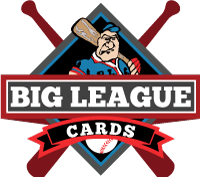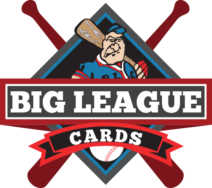Inside the Pack: Altered and Trimmed Cards Graded by PSA, BGS
Over on the Blowout Cards Forum, user 3124508 has spent months uncovering and reporting on trimmed and otherwise altered cards being sold on ebay, primarily by consignors like PWCC and Probstein123. The link above will take you to all the threads that this particular user has started, though since this time, the mindhive of the internet has uncovered many more trimmed cards, including high-end vintage baseball cards like a 1952 Topps Mantle. In most cases, the cards were graded and slabbed by either PSA or BGS. In no cases were they identified as altered. You could spend hours reading this stuff, so I won’t rehash all the gory details here. A plot summary is that using serial numbers and sold items databases, most of the cards can be linked to the raw cards, which clinches an alteration without question. More than the story here, which has been written about all over card forums and blogs, I’m interested in the impact this could have on the graded card industry.
Of course, the brunt of the blame lies with the bad actors who actually carried out the alterations, intending to profit from fraud and deceit. That said, a good amount of blame must lie with the third-party graders (TPGs) like PSA and Beckett. Their job — actually, their only job — is to give us an informed opinion on a card’s condition. Vintage cards are more easily detectable as trimmed, but in theory, it shouldn’t be difficult to measure a modern card and determine if it’s full-sized or not. In practice, that’s not necessarily the case; even advanced measurement tools are rarely perfect down to the millimeter, which is the type of accuracy that might be needed to determine a trimmed card.
Another argument is that if an amateur sleuth armed with nothing more than a web browser can match these cards to sold auctions, then the TPGs should be doing the same. Especially for high-dollar cards and cards with serial numbers, they should be conducting a search to find previous sales of these cards and determine if the card appears altered. However, people already complain about turnaround times on graded card submissions. This sort of process would take even longer and cause further delays.
So, in reality, what does this mean for the graded card industry? Likely not a whole lot. Even though the count is in the hundreds — that’s right, hundreds — the number of altered cards that have been discovered in slabs is a tiny drop in the bucket compared to the overall number of graded cards out there. There are certain to be altered cards still undiscovered, but in the long run, this quantity of cards is a blip on the radar when talking about the volume of PSA and Beckett.
What will certainly be interesting, however, is to see if this, combined with the rash of authenticated forged tobacco card signatures from a few months ago, gives rise to a new grading company, or increases the prominence of SGC. SGC has, thus far, not yet been implicated in this alteration scandal, and had almost no hand in the autograph scandal — in fact, it was their denial of an already-certified autograph that kicked off the amateur sleuthing in the autograph scandal in the first place. On its face, it appears that SGC has been more vigilant about these things. However, SGC has long been the Wendy’s to PSA and Beckett’s McDonald’s and Burger King; although popular with the pre-war crowd, SGC has never caught on for modern cards.
The market certainly also seems ripe for a new company to enter. One prominent card shop owner noted to me that, while a multi-million-dollar investment would be needed, it certainly seemed feasible to develop a computer-based system for grading, one that used AI to determine trimming, centering, corner sharpness, and so on. If scandals like these become commonplace, the marketplace may give birth to such a company.
So how can you know if a card you have has been altered? Plain and simple: do as much research as possible. As I’ve noted here, and many have noted across the internet, third-party graders and third-party authenticators are paid for an informed opinion, but they don’t know with 100% certainty. Therefore, the general rule I live by when purchasing a high-dollar item is that I assume it’s fake or altered, and try to convince myself otherwise. When working under this assumption, you will find that you do a lot of legwork to become an expert on what you’re buying. I use sites like Worthpoint to search historical sales (you need an account to see prices, but not photos). I use Google to find auction house listings, or discussion threads on forums. Sometimes I’ll ask a hobby friend what he thinks about it. The best course of action you can take is proceed with extreme caution and assume the worst until you can prove otherwise.



